A short history of the drum machine
Drum machine invention started nearly 100 years ago, before heading to its heyday and the current renaissance. We track its progress
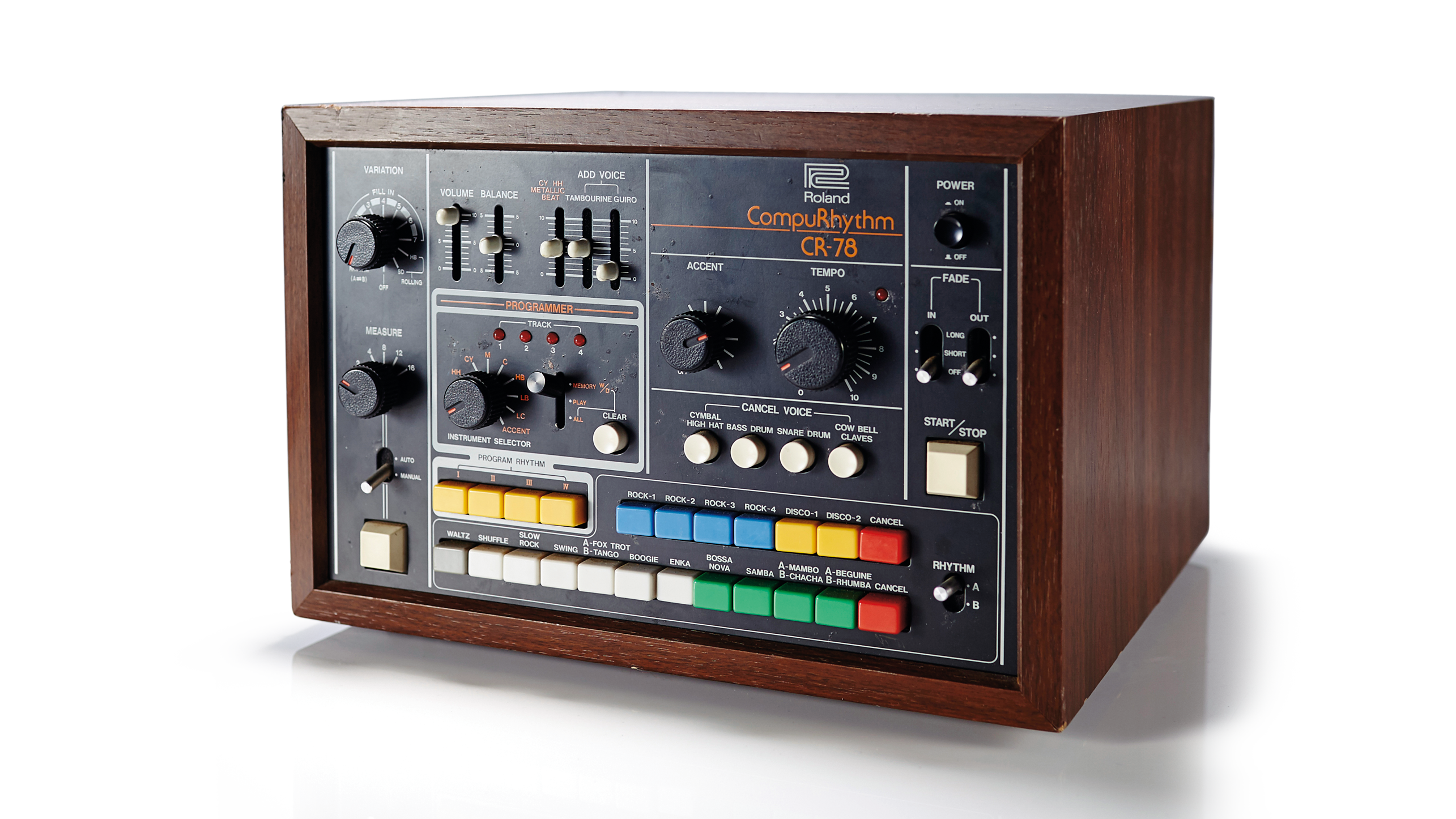
The Rhythmicon, invented and developed by Leon Theremin and Henry Cowell in 1930 is considered to be the world’s first drum machine.
Despite this grand title, it was played rather like a conventional music keyboard, with each note triggering a set of notes to be played, which in turn generated rhythmic patterns. The resulting cacophony was a highly polyrhythmic affair, where it could play quintuplets against triplets, with a minimum of effort.
It was calculated that it would take over 455 days to be able to play every conceivable Rhythmicon pattern, or combination of patterns, in completion. Not quite the drum machine notion that we’re more accustomed to these days.
In the tradition of the ’round-the-piano-sing-along, a market was beginning to reveal itself with a desire for rhythm generation units to accompany pianos and home organs.
The Chamberlin Rhythmate was produced in 1949, and much like its sister product, the Mellotron, reproduced live players via tape loops for all your bossanova and cha-cha needs! It was a stylish, wooden unit, with a speaker on one side of the cabinet. With such fine woodwork on display, it was an excellent addition to any home!
By your side-man
It was a full ten years later that Wurlitzer released the Sideman. For the first time, since the Rhythmicon, a drum machine appeared that created sounds electronically, rather than via recording, but in this instance they sounded authentic and drum-like.
The Sideman relied on a circuit board, which looked reminiscent of a clock face. A rotating arm would brush against contacts to complete a circuit, at which point a drum sound would trigger.
Want all the hottest music and gear news, reviews, deals, features and more, direct to your inbox? Sign up here.
We can all agree that these three drum machines (and we’re stretching that term) over a period of 30 years, isn’t exactly pushing the beatbox envelope. But fear not, because things were about to get far more interesting…
Going Eko
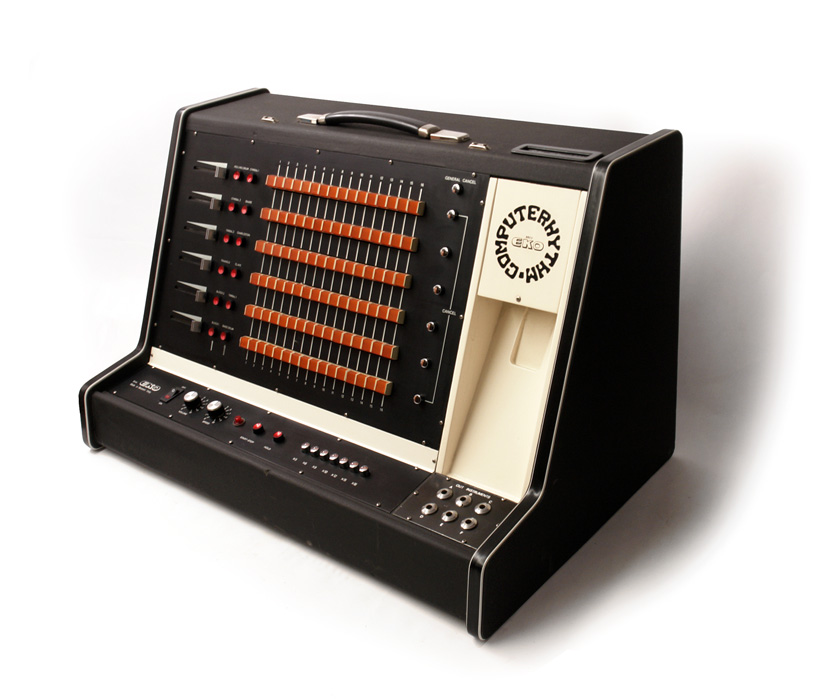
During the early '70s, several beatbox machines made it to market, with one of the most important being the Eko Corporation ComputeRhythm from 1972. Working firmly within the analogue domain, the Eko is regarded as the first programmable machine, allowing six instruments to be programmed within a framework of up to 16 steps.
This was an important concept, not least because it set a benchmark for many machines that followed including some of the most infamous from drum machine history. Due to their rarity, there are thought to be only 15 ComputeRhythms in working order throughout the world today, although on a pure design aesthetic, it oozes 70s retro charm, and would not look out of place on the set of 2001: A Space Odyssey.
Roland's Ace
Ace Tone also produced a number of machines, before morphing into the Roland Corporation. The TR-77, from 1972, was designed to be flat enough to place on top of a home organ or miniature piano, incorporating a wooden music stand on its top. Roland had some catching up to do, to compete with the programmability of the Eko, and sure enough, with the development of microchips, the 1978 release of the legendary CR-78 saw chip technology used for the first time to allow chip-based pattern programmability.
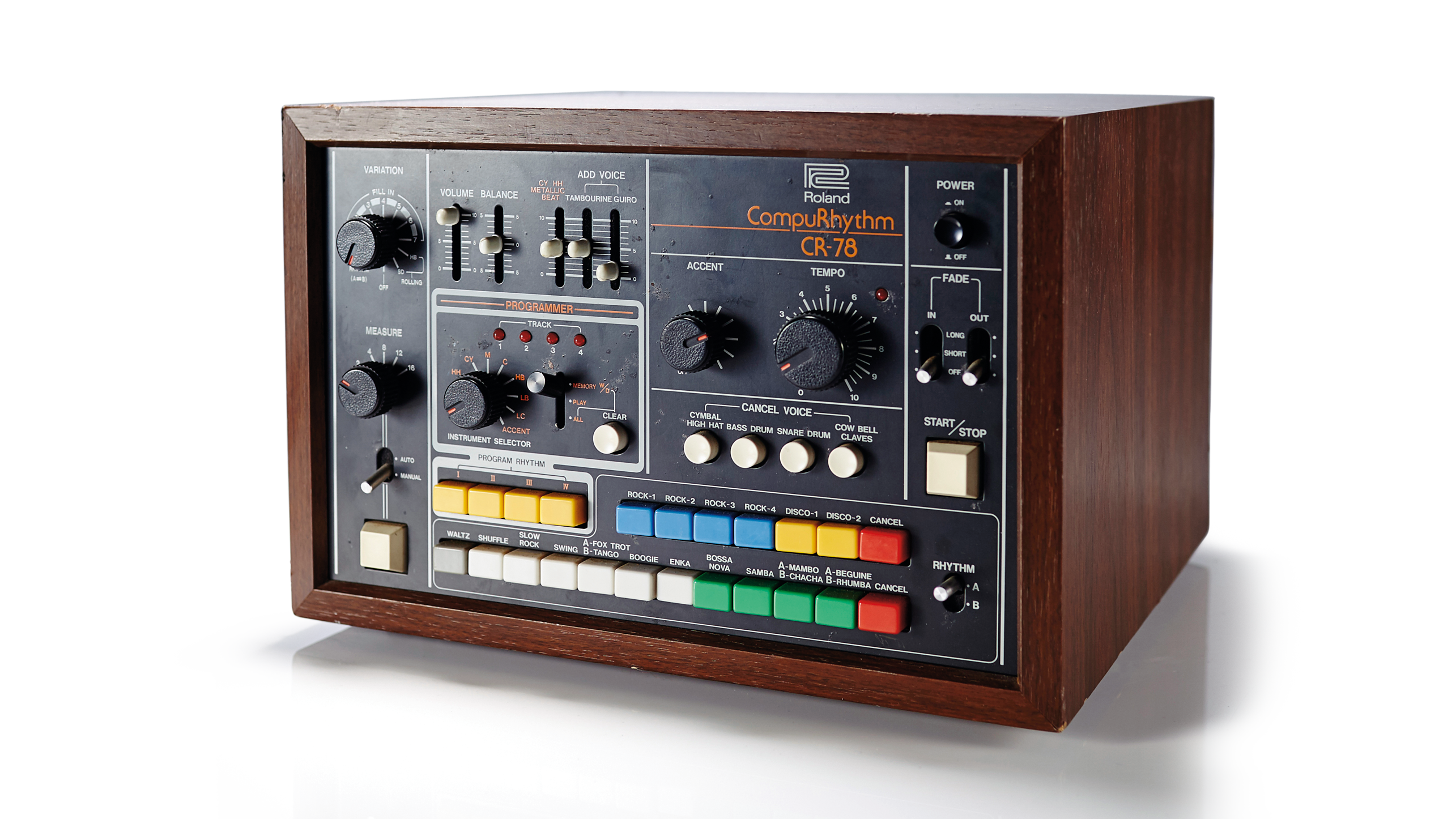
The CR-78’s success was quickly followed with the release of the first Dr. Rhythm DR-55. Rather than being released under the Roland brand, it was categorised as a unit to act as a backing device for guitarists, hence it was released as Boss product. Drawing on the success of the CR-78, it was a fairly cheap and programmable machine, though its programmability was limited to the snare and bass drum sounds and only 16 steps.
Even so, the good Doctor has sealed its legendary status in history, as it was the first drum machine to be used by the band Depeche Mode. It was Dave Gahan’s job, along with providing the band’s lead vocals, to pick the appropriate pattern to play, and adjust the tempo to suit the song.
Arguably, it took many artists quite some time to appreciate what these basic drum boxes could bring to the creative and artistic tables. Bands such as Blondie and Culture Club embraced the CR-78, as did Phil Collins, who used the CR-78 alongside an eerie reverb, on In The Air Tonight, before the infamous and thundering drum fill explodes into view.
Planet 808
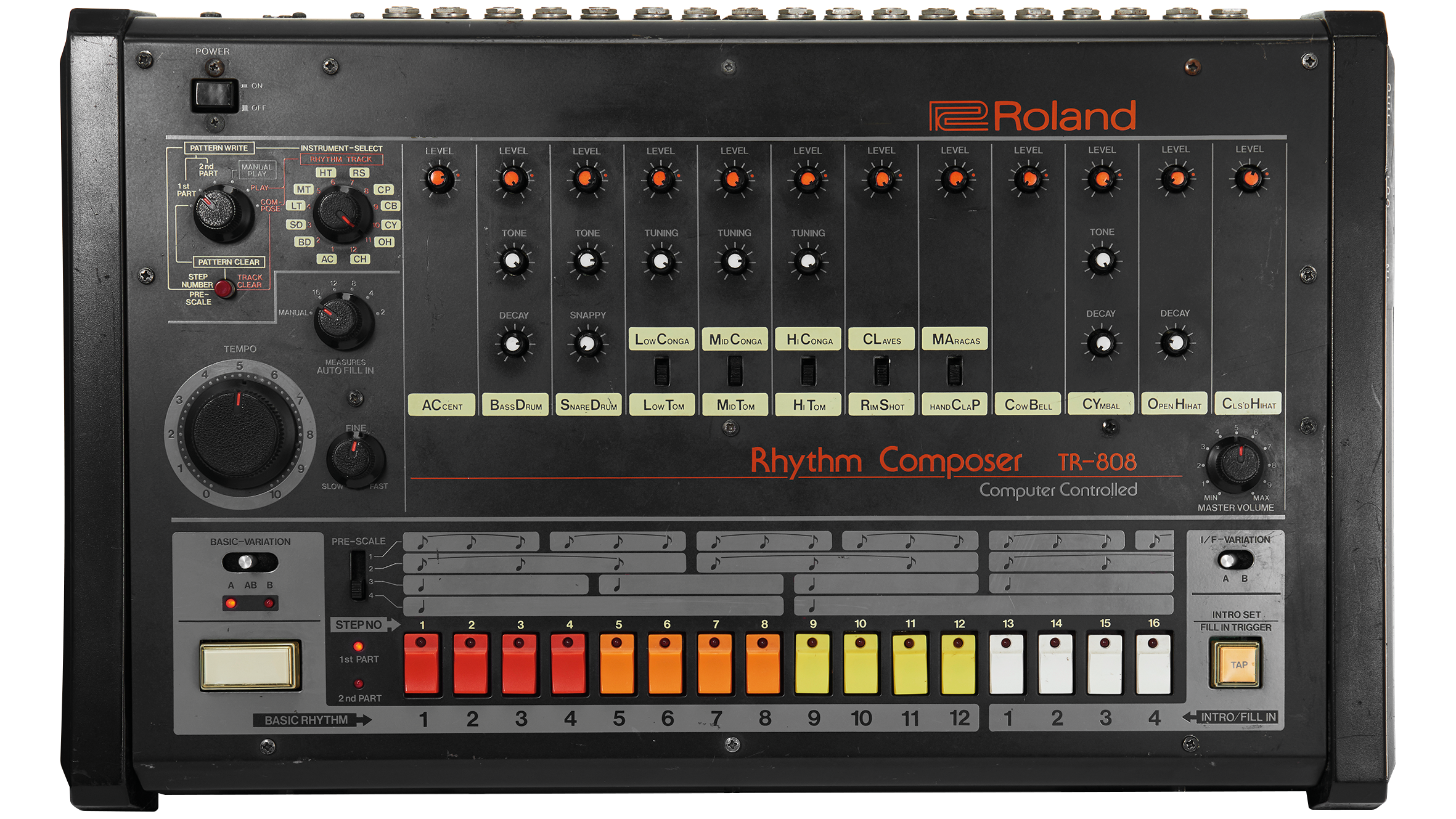
Roland consolidated their drum machine expertise to produce the now legendary TR-808 Rhythm Composer in 1980. It’s difficult to imagine now, but it was initially a flop, not least because of its relatively high price tag.
The problem for the TR-808 was that it was an entirely analogue sound source machine. This meant that many of the drums did not sound like their acoustic counterparts. Of course, we now view this as its endearing charm, but back then it was less convincing.
This argument was settled by the Linn LM1 the following year. This was the first drum machine to exclusively use samples. Its inventor, Roger Linn, hired a drummer friend to go around to his house where they recorded the drum samples. The legendary snare, with its huge fat sound, was recorded in the dry space of a wardrobe at Roger’s house.
Moreover, it was done very quickly in a single pass! The LM-1 attracted an enormous number of fans, and a user base that read like a who’s who of music production. It also holds the status of being the first drum machine to be on a number one single in the UK. Don’t You Want Me by The Human League hit the top spot at the end of 1981.
Rattle those cymbals
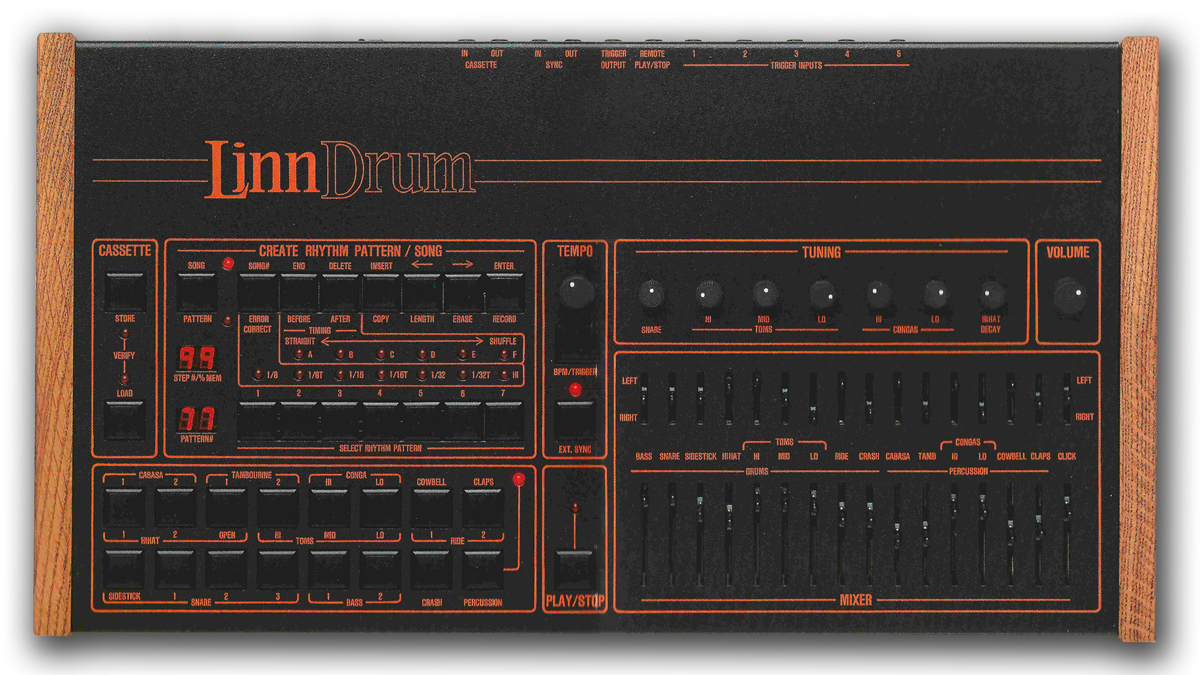
Roger Linn updated the LM-1, releasing the LM-2 in 1982. It was this model that coined the term LinnDrum, selling considerably more units than its predecessor.
In an attempt not to be outdone, Roland updated their 808 concept, releasing the TR-909 Rhythm Composer in 1983. In something of a hybrid move, they employed sampling technology for the cymbal and hi-hat sounds, while also utilising the new protocol called MIDI.
Regrettably, it was still competing with the arguably more realistic and polished sounds from the LinnDrum. The 909, much like its predecessor, was also a bit of a flop.

It was left to the new bedroom producer generation to buy up the old and unwanted 808 and 909 units, and start making music with them. It was this creative groundswell that informed the sound of the dance and hip-hop movements, with producers offering a preference for specific instrument timbre from one machine or another.
As the secondhand prices were rock bottom, these machines were literally as cheap as chips. Sadly, this is not the case now as both 808 and 909 drum machines will cost thousands on the secondhand market.
There are so many classic machines that we cannot mention them all, but we have to give passing praise to a few key beat-machines, namely the Korg Mini Pops series, Oberheim DMX, E-mu SP-1200 and Drumulator, and finally the Akai MPC series, which played a significant role in altering drum machine and sample usage in the live and production arenas.

The second Renaissance
As computer sequencing came of age in the late 80s, the demand for drum machines declined. Thanks to interest in hardware devices, also driven by the lust for Eurorack systems, drum machines enjoyed a resurgence a couple of decades later.
Ten years ago, Korg did the unthinkable and released a small drum machine as part of their Volca range. Moreover, it was predominantly analogue-based, with sounds that could give the secondhand extremities an excellent run for their money. It was also relatively inexpensive and incredible fun to use.

At the opposite end of the drum machine spectrum, Swedish manufacturer Elektron were beginning to gain traction with their device called Machinedrum. Released at the beginning of the ’00s, Machinedrum provided numerous reproductions of classic drum machines, along with extensive programming capabilities. It was well built, sounded fantastic, and provided all of the connectivity that would be expected with a modern day instrument.
Then, of course, we have software and vst drum machines. You can now find reincarnations of pretty much any device ever produced, and if you cannot find a bespoke plugin, there are plenty of sample libraries culled from every machine produced in the history of drum machines. More importantly, there is software to suit all budgets, with many great samples being available for free.
Don't miss: The best VST drum machines


Computer Music magazine is the world’s best selling publication dedicated solely to making great music with your Mac or PC computer. Each issue it brings its lucky readers the best in cutting-edge tutorials, need-to-know, expert software reviews and even all the tools you actually need to make great music today, courtesy of our legendary CM Plugin Suite.
